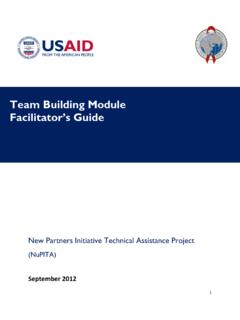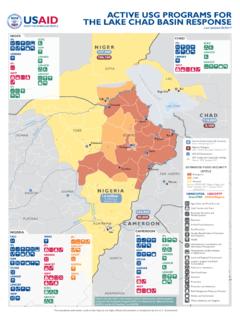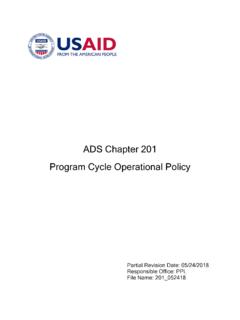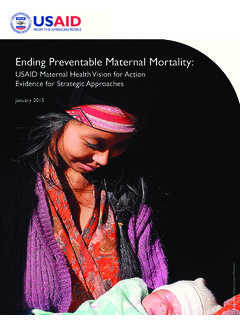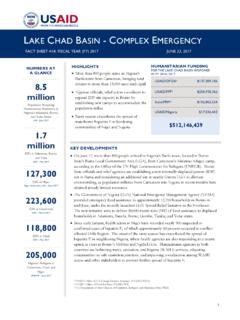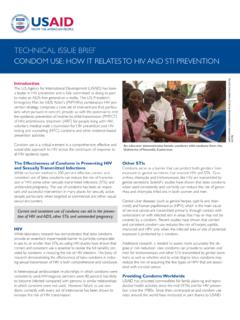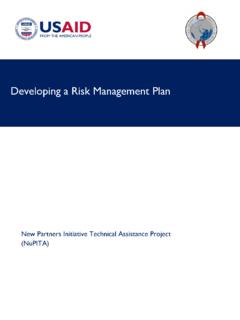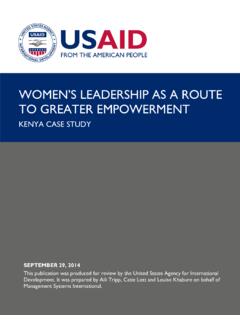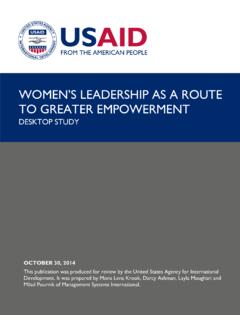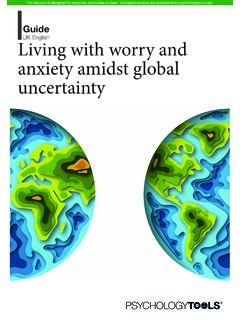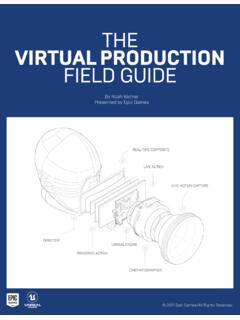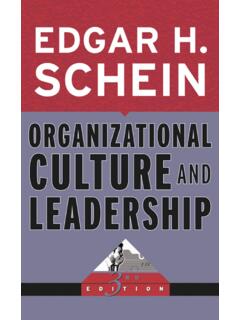Transcription of A MANAGER S GUIDE TO A SCIENTIFIC APPROACH TO …
1 THE LOGICAL FRAMEWORK. A MANAGER 'S GUIDE . TO A SCIENTIFIC APPROACH . TO DESIGN & EVALUATION. THE LOGICAL FRAMEWORK. A MANAGER 'S GUIDE . TO A SCIENTIFIC APPROACH . TO DESIGN & EVALUATION. Prepared by: Practical Concepts Incorporated (PCI) November, 1979. 1730 Rhode Island Avenue, NW #200. Washington, DC 20036. (202) 833-1040. Copyright 1979. Practical Concepts Incorporated All rights reserved TABLE OF CONTENTS. SECTION ONE BACKGROUND INFORMATION: GENESIS OF PCI'S PROJECT. MANAGEMENT SYSTEM .. 1. The Logical Framework APPROACH : Summary.
2 2. SECTION TWO THE LOGICAL FRAMEWORK APPROACH .. 5. A. Overview of the Logical Framework APPROACH .. 5. 1. Hierarchy of Project Objectives .. 7. 2. Linked Hypotheses .. 7. 3. Assumptions .. 9. 4. Objectively Verifiable 14. 5. Means of Verification .. 20. 6. Manageable Interest .. 21. B. Building The Project Design .. 26. C. The Logical Framework And Evaluation .. 31. APPENDIX A THE LOGICAL FRAMEWORK AND CAUSE AND EFFECT. HYPOTHESES IN AN ECONOMIC OR SOCIAL DEVELOPMENT. SETTING .. 32. APPENDIX B THE RELATIONSHIP BETWEEN THE LOGICAL FRAMEWORK AND.
3 CONTRACTS .. 35. APPENDIX C USE OF THE LOGICAL FRAMEWORK APPROACH TO INTEGRATE. ANALYSIS OF TECHNICAL FEASIBILITY, COMMERCIAL. FEASIBILITY, AND SOCIO-ECONOMIC FEASIBILITY .. 38. i SECTION ONE. BACKGROUND INFORMATION: GENESIS OF PCI'S PROJECT MANAGEMENT SYSTEM. If you don't know where you are going, Any road will take you there.. Peter Drucker once said that management is the setting of objectives. This much is certain if you have no objectives, then the relative value of any course of action cannot be compared to alternative courses of action.
4 All courses of action, all roads, are the same you're consuming resources, you're moving; but where are you going? In 1969, to discover where they were going , the Agency for International Development commissioned PCI staff to analyze its project evaluation system. That analysis uncovered three basic problems that were seriously hindering not only meaningful evaluation of projects, but also their implementation. 1. Planning was too vague: Objectives were multiple and not clearly related to project activities.
5 There was no clear picture of what the project would look like if it were successful. Thus, evaluators could not compare in an objective manner what was planned with what actually happened. 2. The management responsibility was unclear: Project managers were committed to the fact that projects must be justified in terms of their ultimate benefits ( impact ) yet were reluctant to be considered responsible for impact; there were too many important factors outside their control. They found it difficult to articulate what they should be responsibly for, and ended up not accepting any responsibility for results.
6 3. Evaluation was an adversary process: With the absence of clear targets and frequent disagreements (even among project team members) as to just what the project was about, evaluators ended up using their own judgment as to what they thought were good things and bad things . The subsequent evaluation results would then frequently become a basis for further argument about what was good or bad, rather than resulting in constructive actions for project improvement. The Logical Framework Approach1 to project design and evaluation was specifically developed in response to the above problems.
7 It encourages collaboration from the outset and helps avoid adversary relationships in both project formulation and evaluation by: 1. Principal architects of the Logical Framework A roach were Leon J. Rosenberg and Lawrence D. Posner, of PCI. (Practical Concepts Incorporated). The concepts draw heavily from science, and experience gained from the management of complex space age Or rams, such as the early satellite launchings and the development of the Polaris 1. 1. Fostering of clearly stated, explicit and measureable description of what will happen if the project is successful.
8 2. Clarifying what a project MANAGER should be responsible for accomplishing and why;. 3. Displaying the key elements of project design and their relationships to each other in a way that facilitates project analysis;. 4. Changing the focus of evaluation from who is to blame? to what is the most realistic plan for this project for the future based on the best evidence available now? This APPROACH makes the project MANAGER a primary user of evaluation results. The Logical Framework requires clear objectives and then bases evaluation on evidence.
9 Evaluation becomes a tool to help the project MANAGER , rather than a club that threatens him. The Logical Framework was tested by AID in 1970 for evaluation of technical assistance projects. It was implemented in 30 AID country assistance programs in 1970 and 1971. In subsequent years the Logical Framework APPROACH was extended to AID's loan projects and its centrally-funded projects. Canada's foreign aid agency (CIDA) tested the Logical Framework APPROACH in 1974 and in 1975 decided to apply it worldwide.
10 The Logical Framework APPROACH is taught now in government and academic institutions in the and in developing New applications are being developed. A complete Project Management System (PMS) was developed in Pakistan adding to the Logical Framework the use of performance networking''. for monitoring and reporting systems. In Thailand, Oman and Guatemala, PMS is being tested for adoption within Ministries. In Costa Rica, the Ministry of Agriculture and Livestock is doing Program Budgeting using the Logical Framework APPROACH .
